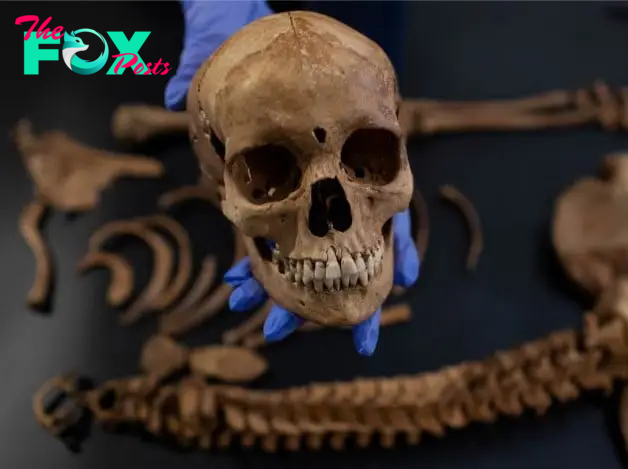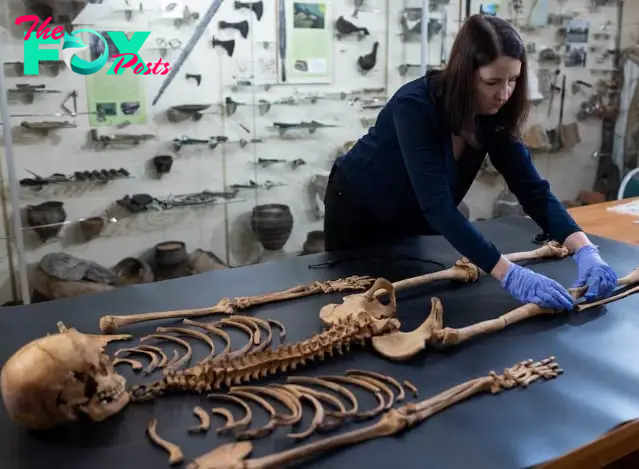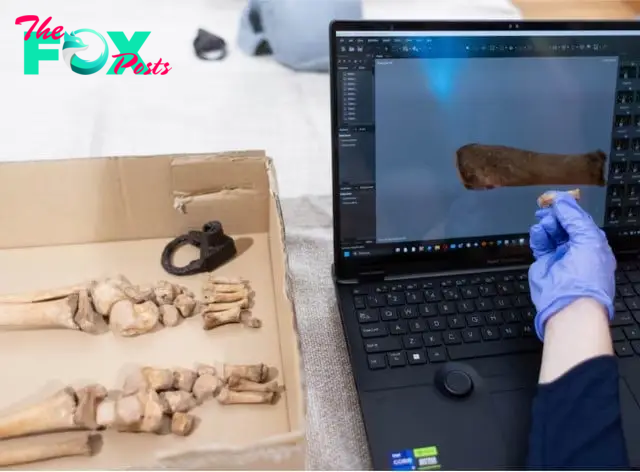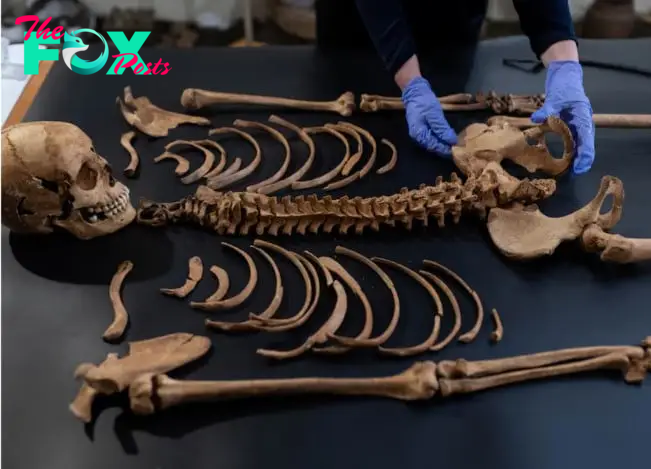Technology
400 year old 'vampire brought back to life' by scientists | The Express Tribune
Buried with a padlock on her foot and an iron sickle across her neck, "Zosia" was never supposed to be able to come back from the dead.
Entombed in an unmarked cemetery in Pien, northern Poland, the young woman was one of dozens feared by her neighbours to have been a "vampire".

Now, using DNA, 3D printing and modelling clay, a team of scientists has reconstructed Zosia's 400-year-old face, revealing the human story buried by supernatural beliefs.
"It's really ironic, in a way," said Swedish archaeologist Oscar Nilsson. "These people burying her, they did everything they could in order to prevent her from coming back from the dead... we have done everything we can in order to bring her back to life."
Zosia, as she was named by locals, was found in 2022 by a team of archaeologists from Torun's Nicolaus Copernicus University.

Aged 18-20 when she died, analysis of Zosia's skull suggests she suffered from a Health condition which would have caused fainting and severe headaches, as well as possible mental Health issues, Nilsson said.
The sickle, the padlock and certain types of wood found at the grave site were all believed at the time to hold magical properties protecting against vampires, according to the Nicolaus Copernicus team.
Zosia's was Grave No. 75 at the unmarked cemetery in Pien, outside the northern city of Bydgoszcz. Among the other bodies found at the site was a "vampire" child, buried face down and similarly padlocked at the foot.
Little is known of Zosia's life, but Nilsson and the Pien team say items she was buried with point to her being from a wealthy — possibly noble — family.
The 17th century Europe she lived in was ravaged by war, something Nilsson suggests created a climate of fear in which belief in supernatural monsters was commonplace.

Nilsson's recreation began with creating a 3D printed replica of the skull, before gradually building layers of plasticine clay "muscle by muscle" to form a life-like face.
He uses bone structure combined with information on gender, age, ethnicity and approximate weight to estimate the depth of facial features.

"It's emotional to watch a face coming back from the dead, especially when you know the story about this young girl," Nilsson says.
Nilsson said he wanted to bring Zosia back "as a human, and not as this monster that she is buried as".
-

 Technology6m ago
Technology6m agoWhy a Technocracy Fails Young People
-

 Technology12h ago
Technology12h agoTransplanting insulin-making cells to treat Type 1 diabetes is challenging − but stem cells offer a potential improvement
-

 Technology17h ago
Technology17h agoShould I worry about mold growing in my home?
-

 Technology17h ago
Technology17h agoBlurry, morphing and surreal – a new AI aesthetic is emerging in film
-

 Technology1d ago
Technology1d agoSpaceX’s Starship advances in spaceflight despite booster landing failure | The Express Tribune
-

 Technology1d ago
Technology1d agoGreat Barrier Reef faces 'significant coral deaths' following recent climate events | The Express Tribune
-

 Technology1d ago
Technology1d agoMeta to challenge India's data-sharing restrictions between WhatsApp, other apps | The Express Tribune
-

 Technology1d ago
Technology1d agoMerlin inks £85m deal to bring Minecraft attractions to UK, US parks by 2026-2027 | The Express Tribune

















